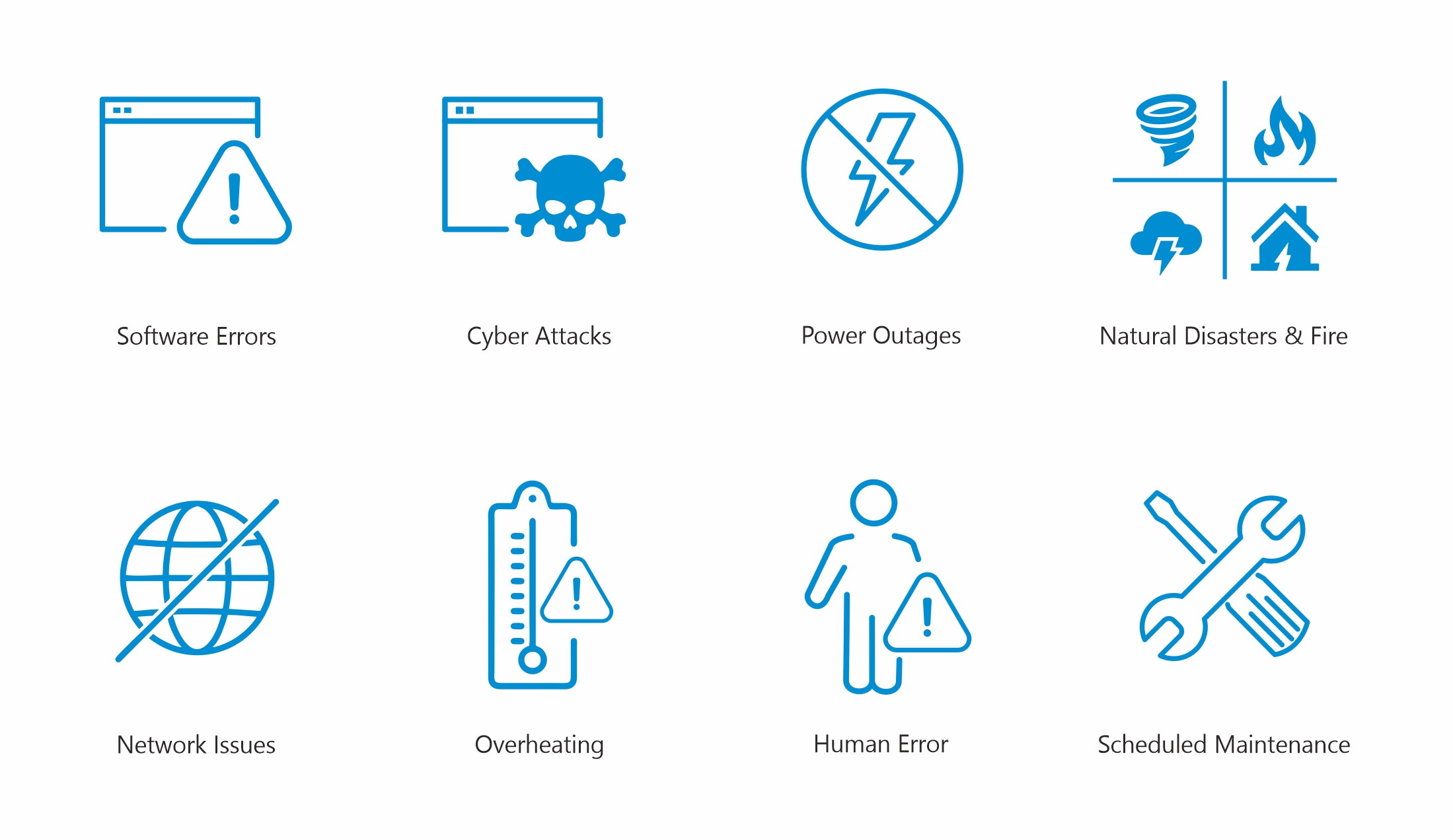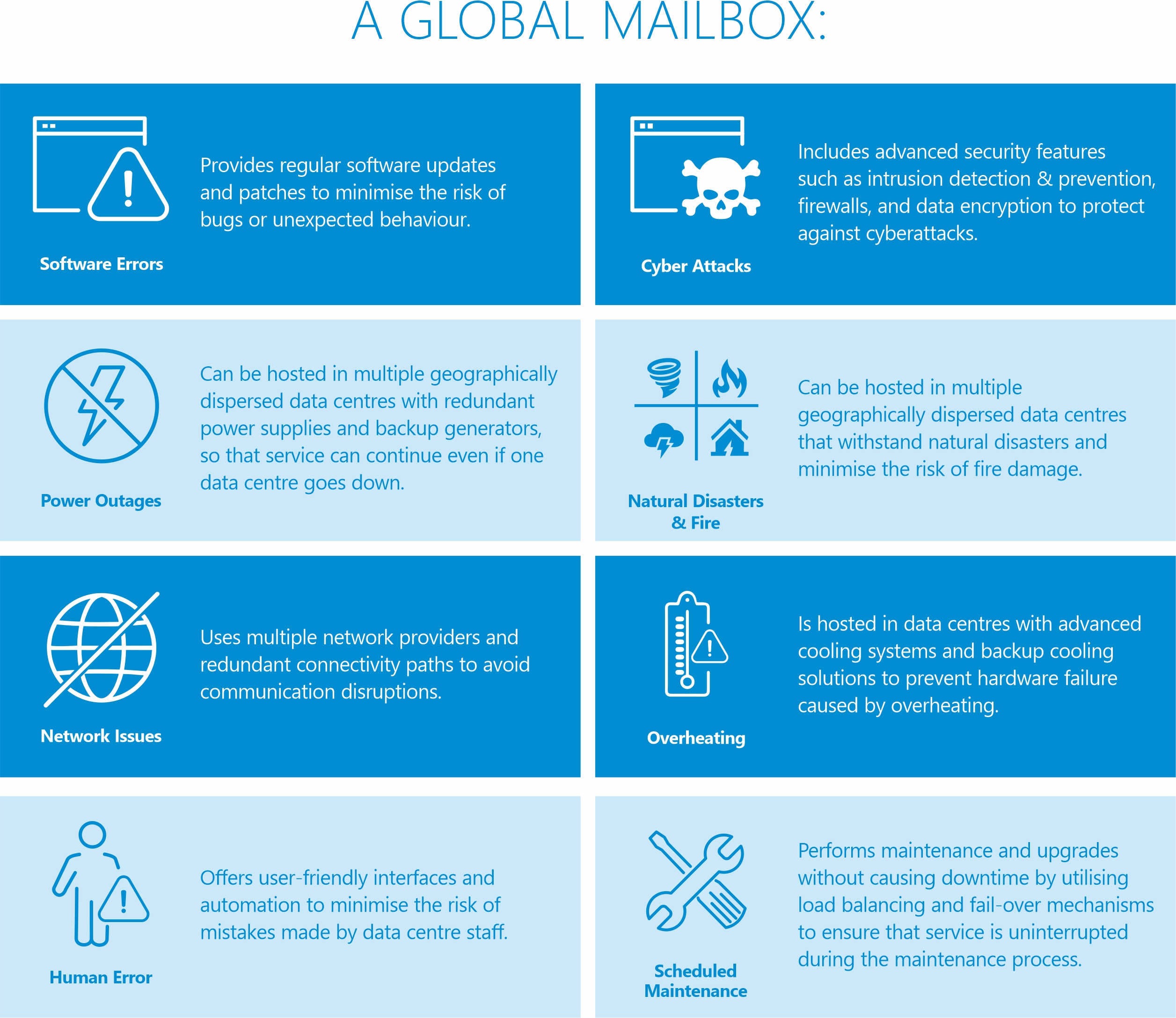Avra: Enhancing B2Bi Connectivity Understanding the World of B2Bi with...
Read More“Data centre downtime” is a phrase that strikes fear in the hearts of any organisation, as it represents the potential for significant disruptions to critical systems and operations. It can have a major impact beyond the business community, including public services, emergency response, and critical infrastructure.


To
ensure high-availability operations and redundancy, businesses commonly
use approaches such as a database-driven strategy that leverages the disaster
recovery capabilities of a database vendor or operating at a third-party hot
site by transferring copies of the latest backup. However, these approaches can
still result in occasional downtime, as well as recovery latency, and increased
costs.
While there are a few Global Mailbox offerings available in the market, they each have their own drawbacks. One common issue is that some rely on a single data centre, which makes them vulnerable to downtime and reduces their redundancy. Some solutions may not provide the same disaster recovery capabilities, while others may have limitations on data storage and transfer, potentially affecting performance and usability. Another important drawback is the level of customisation and control that companies have over their email infrastructure. Most solutions are restrictive in terms of configurations and integrations.
IBM Sterling Global Mailbox, on the other hand, offers a solution to these common issues. It is not reliant on a single data centre, providing greater redundancy and resilience. Additionally, IBM offers tailored plans based on an organisation’s specific needs, including additional storage and data transfer capacity. Companies using IBM’s Global Mailbox can enjoy greater customisation and control over their email infrastructure, avoiding potential restrictions on configurations and integrations. This makes the IBM Sterling Global Mailbox a highly attractive option for businesses seeking a flexible and resilient Global Mailbox solution.
IBM Sterling Global Mailbox’s all-inclusive solution addresses data centre downtime challenges by implementing private mailboxes, load balancing among data centres, and regular replication for disaster recovery.

Earlier in this article, we showed the various problems that can cause data centre downtime. Now, let us revisit those issues and explore how a Global Mailbox effectively addresses and counteracts each of them:

In summary, IBM Sterling Global Mailbox offers a holistic solution that not only addresses data centre downtime challenges but also revolutionises your organisation’s data management and B2B integration processes.
By leveraging the advanced features of IBM Sterling Global Mailbox, you can eliminate downtime challenges and achieve a high-availability infrastructure, leading to a seamless experience for all stakeholders. By partnering with Coliance, you can unlock the full potential of IBM Sterling Global Mailbox, customised to fit your organisation’s unique needs. Our expert team can guide you through the implementation process, ensuring a smooth transition and maximising the benefits of this innovative solution. Don’t let data centre downtime hold your organisation back – contact Coliance today to learn more about how we can help your business thrive in an increasingly interconnected and fast-paced digital landscape.
Avra: Enhancing B2Bi Connectivity Understanding the World of B2Bi with...
Read MoreUnveiling Opsis: Exploring Coliance’s Innovative Solution Opsis, derived from the...
Read MoreStreamlined Compliance and Cost Savings: Unleash the Full Potential of...
Read MoreThe Power of Chat GPT and NLP: Revolutionising Language Technology...
Read More“Unveiling the Menace: Runaway Processes and the Looping Threat to...
Read MoreWhile there are a few Global Mailbox offerings available in the market, they each have their own drawbacks. One common issue is that some rely on a single data centre, which makes them vulnerable to downtime and reduces their redundancy. Some solutions may not provide the same disaster recovery capabilities, while others may have limitations on data storage and transfer, potentially affecting performance and usability. Another important drawback is the level of customisation and control that companies have over their email infrastructure. Most solutions are restrictive in terms of configurations and integrations.
IBM Sterling Global Mailbox, on the other hand, offers a solution to these common issues. It is not reliant on a single data centre, providing greater redundancy and resilience. Additionally, IBM offers tailored plans based on an organisation’s specific needs, including additional storage and data transfer capacity. Companies using IBM’s Global Mailbox can enjoy greater customisation and control over their email infrastructure, avoiding potential restrictions on configurations and integrations. This makes the IBM Sterling Global Mailbox a highly attractive option for businesses seeking a flexible and resilient Global Mailbox solution.
IBM Sterling Global Mailbox’s all-inclusive solution addresses data centre downtime challenges by implementing private mailboxes, load balancing among data centres, and regular replication for disaster recovery.

Earlier in this article, we showed the various problems that can cause data centre downtime. Now, let us revisit those issues and explore how a Global Mailbox effectively addresses and counteracts each of them:

In summary, IBM Sterling Global Mailbox offers a holistic solution that not only addresses data centre downtime challenges but also revolutionises your organisation’s data management and B2B integration processes.
By leveraging the advanced features of IBM Sterling Global Mailbox, you can eliminate downtime challenges and achieve a high-availability infrastructure, leading to a seamless experience for all stakeholders. By partnering with Coliance, you can unlock the full potential of IBM Sterling Global Mailbox, customised to fit your organisation’s unique needs. Our expert team can guide you through the implementation process, ensuring a smooth transition and maximising the benefits of this innovative solution. Don’t let data centre downtime hold your organisation back – contact Coliance today to learn more about how we can help your business thrive in an increasingly interconnected and fast-paced digital landscape.
Coliance © 2024 All rights reserved